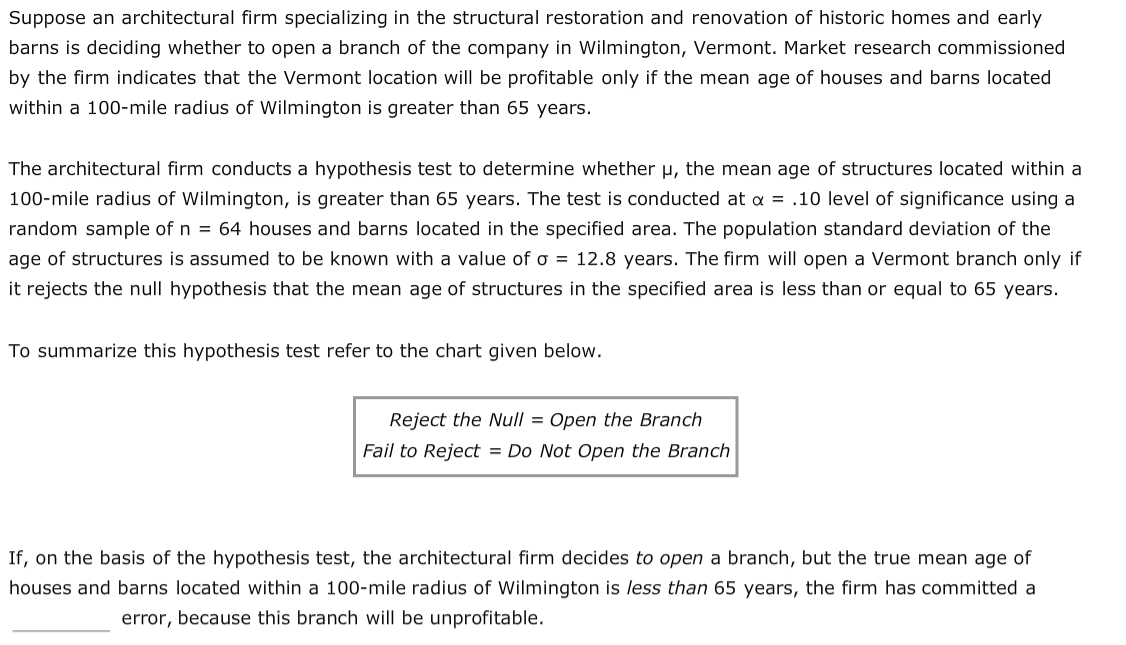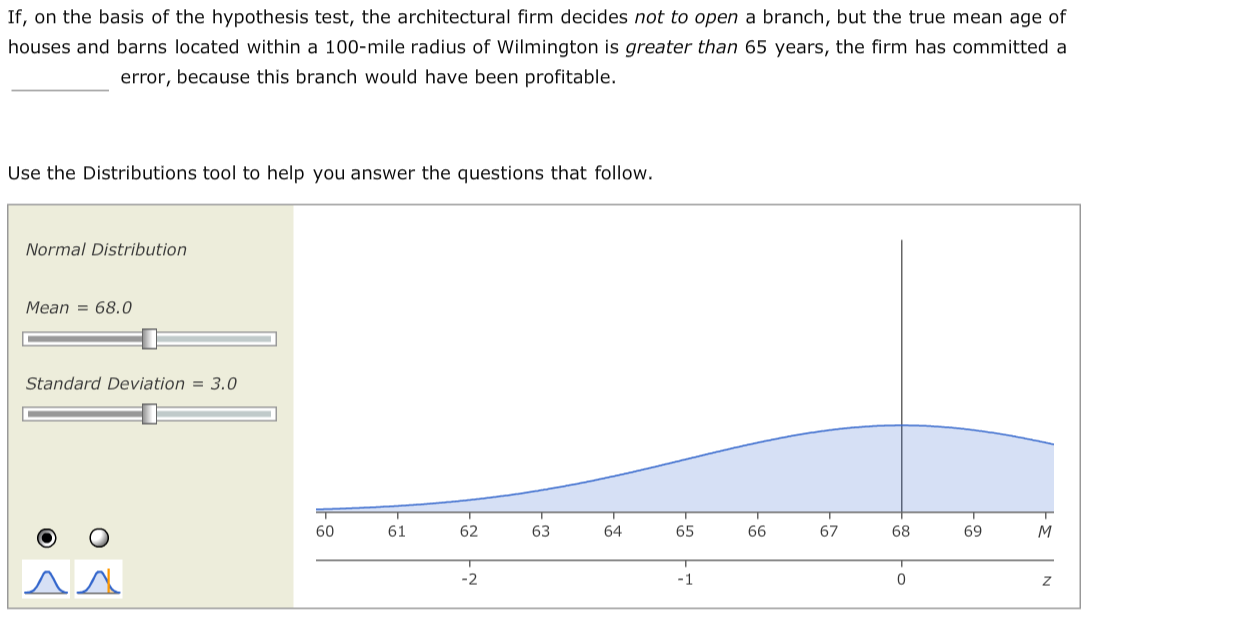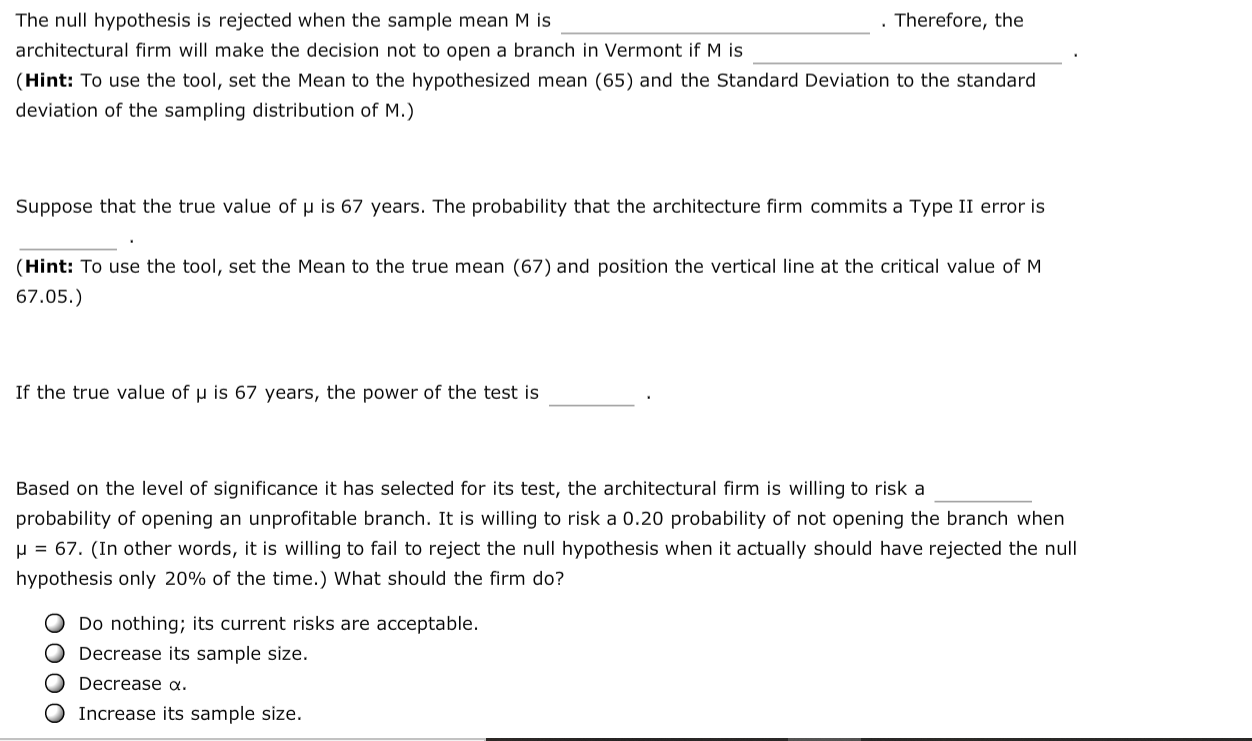it is all one question just i couldnt fit the whole thing. there are fill in blank questions with options. like a pull down bar
Suppose an architectural rm specializing in the structural restoration and renovation of historic homes and early barns is deciding whether to open a branch of the company in Wilmington, Vermont. Market research commissioned by the rm indicates that the Vermont location will be profitable only if the mean age of houses and barns located within a IUD-mile radius of Wilmington is greater than 65 years. The architectural rm conducts a hypothesis test to determine whether u, the mean age of structures located within a IUD-mile radius of Wilmington, is greater than 65 years. The test is conducted at o: = .10 level of significance using a random sample of n = 64 houses and barns located in the specified area. The population standard deviation of the age of structures is assumed to be known with a value of o = 12.8 years. The rm will open a Vermont branch only if it rejects the null hypothesis that the mean age of structures in the specified area is less than or equal to 65 years. To summarize this hypothesis test refer to the chart given below. Reject the Null = Open the Branch Fail to Reject = Do Not Open the Branch If, on the basis of the hypothesis test, the architectural rm decides to open a branch, but the true mean age of houses and barns located within a IUD-mile radius of Wilmington is less than 65 years, the rm has committed a error, because this branch will be unprofitable. If, on the basis of the hypothesis test, the architectural rm decides not to open a branch, but the true mean age of houses and barns located within a 100-mile radius of Wilmington is greater than 65 years, the rm has committed a error, because this branch would have been profitable. Use the Distributions tool to help you answer the questions that follow. Narmai Distribution Mean = 68.0 Standard Deviation = 3.0 Q o 60 61 62 63 64 65 66 6? 6B 69 M A A '2 -1 D Z The null hypothesis is rejected when the sample mean M is . Therefore, the architectural rm will make the decision not to open a branch in Vermont if M is (Hint: To use the tool, set the Mean to the hypothesized mean (65) and the Standard Deviation to the standard deviation of the sampling distribution of M.) Suppose that the true value of u is 67 years. The probability that the architecture rm commits a Type II error is (Hint: To use the tool, set the Mean to the true mean (67) and position the vertical line at the critical value of M 67.05.) If the true value of p is 67 years, the power of the test is Based on the level of significance it has selected for its test, the architectural rm is willing to risk a probability of opening an unprofitable branch. It is willing to risk a 0.20 probability of not opening the branch when p = 67. (In other words, it is willing to fail to reject the null hypothesis when it actually should have rejected the null hypothesis only 20% of the time.) What should the rm do? 0 Do nothing; its current risks are acceptable. 0 Decrease its sample size. 0 Decrease 0:. 0 Increase is sample size









